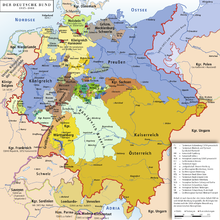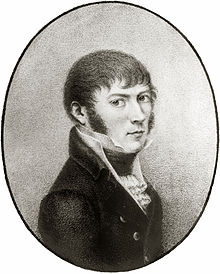Bavarians
This article needs additional citations for verification. (February 2013) |
Protestant minorities | |
| Related ethnic groups | |
|---|---|
| Other Germanic peoples (especially Germans), (romanized) Celtic peoples |

Bavarians (Bavarian: Boarn, Standard German: Baiern) are an ethnographic group of Germans of the Bavaria region, a state within Germany. The group's dialect or speech is known as the Bavarian language, native to Altbayern ("Old Bavaria"), roughly the territory of the Electorate of Bavaria in the 17th century.
Like the neighboring
Areal and dialectal subdivision

There is no ethno-linguistic distinction between Bavarians and
The Bavarian language is divided into three main dialects:
- Upper Palatinian (Oberpfälzisch) is spoken in northern Bavaria (Bohemian Forest, Regensburg).
- Danube Bavarian (Donaubairisch) is spoken in central and south-eastern Bavaria and in Central and Lower Austria (Munich, Salzburg, Vienna).
- Alpine Bavarian is spoken in south-western Bavaria, in southern Carinthia, Styria) and in South Tyrol.
History

Origins
Bavarians are first mentioned in the mid-6th century, in the foothills north of the
The Danubian frontier between the Roman empire and "
Also entering the area, more contemporary with the Bavarians and Lombards, were Slavs, who particularly settled the Upper Palatinate as well as around Regensburg itself (distr. Großprüfening).[7][8][9][10]
Neighboring the emerging Bavarian people in the 6th to 7th centuries were the Alamanni to the west (with the river
Much like was the case in neighboring
Holy Roman Empire
The Duchy of Bavaria was a stem duchy of the Holy Roman Empire, established in the 10th century, derived from an earlier duchy ruled by the Frankish Agilolfings during the 6th to 8th centuries.
The Margraviate of Austria was formed an eastern march to the Duchy of Bavaria in 976, and became a duchy in its own right, the Duchy of Austria, in 1156, in the 13th century falling under the dominion of the House of Habsburg. In the 14th and 15th centuries, upper and lower Bavaria were repeatedly subdivided. Four Duchies (or "partial duchies", Teilherzogtümer) existed after the division of 1392: Lower Bavaria-Straubing, lower Bavaria-Landshut, Bavaria-Ingolstadt and Bavaria-Munich.
Munich, now the capital and cultural center of Bavaria, was founded in the high medieval period, and was the capital of the "partial duchy" of Bavaria-Munich 1392–1503. In 1503, Bavaria was re-united by Duke Albrecht IV of Bavaria-Munich (although the formerly Bavarian offices Kufstein, Kitzbühel and Rattenberg in Tirol were lost in 1504) and established Munich as the capital of all of Bavaria in 1506. In 1623, Bavaria was elevated to Electorate (Kurfürstentum).
Modern history

The
As of 1818, the total population of the kingdom was at 3.7 million, rising to 4.4 million by 1840 and to 6.2 million by 1900, reaching 6.5 million in 1910. Modern Bavaria has 12.5 million inhabitants (as of 2012);[12] the population of Altbayern or Bavaria proper is at 6.7 million.[13]
List of notable Bavarians
Scientists

- Johann Schmidlap (16th century), fireworks maker and rocket pioneer
- Joseph von Fraunhofer (1787–1826), physicist known for discovering the dark absorption lines known as Fraunhofer lines in the sun's spectrum
- Max Joseph von Pettenkofer (1818–1901), chemist and hygienist
- Johannes Stark (1874–1957), physicist, laureate of the 1919 Nobel Prize in Physics
- Feodor Lynen (1911–1979), biochemist, laureate of the 1964 Nobel Prize in Physiology or Medicine
- Rudolf Mössbauer (1929–2011), physicist, laureate of the 1961 Nobel Prize in Physics
Business
- Johanna Händlmaier (?–1950), company co-founder of Händlmaier and creator of a recipe for a sweet Bavarian mustard[14]
- Stefan Schörghuber (1961–2008), businessman
Politicians

- Maximilian II of Bavaria (1811–1864), King of Bavaria (1848–1864)
- Ludwig II of Bavaria (1845–1886), King of Bavaria (1864–1886)
- Reichsführer of the Schutzstaffel and a leading member of the Nazi Party(NSDAP) of Germany
- Franz Josef Strauß(1915–1988), politician, Minister-President of Bavaria (1978–1988)
- Roman Herzog (1934–2017), politician, judge, and legal scholar, President of the Federal Republic of Germany (1994–1999)
- Edmund Stoiber (1941–), politician, Minister-President of Bavaria (1993–2007)
- Horst Seehofer (1949–), politician, Minister-President of Bavaria (2008–2018)
Artists

- Asam brothers, Cosmas Damian (1686–1739) and Egid Quirin (1692–1750), sculptors, workers in stucco, painters, and architects
- Christoph Willibald Gluck (1714–1787), composer
- Franz Hanfstaengl (1804–1877), painter, lithographer, and photographer
- Carl Spitzweg (1808–1885), painter
- Richard Strauss (1864–1949), composer, conductor, pianist, and violinist
- Ludwig Thoma (1867–1921), writer
- Emerenz Meier (1874–1928), folk poet
- Franz Marc (1880–1916), painter and printmaker
- Karl Valentin (1882–1948), comedian
- Carl Orff (1895–1982), composer and music educator
- Michael Ende (1929–1995), writer
- Franzl Lang (1930–2015), singer and actor
- Gerhard Polt (1942–), writer, filmmaker, actor, and cabaret artist
- Werner Herzog (1942–), filmmaker, actor, and writer
- Uschi Glas (1944–), actress and singer
- Patrick Süskind (1949–), writer and screenwriter
- Bernd Eichinger (1949–2011), film producer, director, and screenwriter
- Ottfried Fischer (1953–), retired actor and Kabarett artist
- Jonas Kaufmann (1969–), operatic tenor
Sportspeople
- Franz Beckenbauer (1945–2024), former professional footballer and manager
- Rosi Mittermaier (1950–2023), alpine skier
- Philipp Lahm (1983–), former professional footballer and captain of the German national team which won the 2014 World Cup
- Magdalena Neuner (1987–), former professional biathlete
- Thomas Müller (1989–), professional footballer
Others
- Herenaus Haid (1784–1873), theologian
- Traudl Junge (1920–2002), from 1942 to 1945 secretary of Adolf Hitler
- Joseph Ratzinger(1927–2022), professor of theology and from 2005 to 2013 Pope Benedict XVI
See also
- Weisswurstäquator, German for the White Sausage Equator. A humorous term used in Germany to describe the dividing line between Southern Germany (including Bavaria) and Northern Germany.
- Swabians, another Germanic ethnic group
- Frisians, another Germanic ethnic group
- Bavarian nationalism
References
- ^ 2011 data
- ^ in 10 of 17 elections 1946–2013 receiving the absolute majority of the popular vote, and in all but one receiving the largest fraction of the popular vote, with the sole exception of the 1950 election (beaten by the Social Democrats 28.0% to 27.4%).
- Electorate Palatinate. Apart from these changes, Bavaria corresponds to territory of the kingdom of Bavaria within the German Confederationas defined in 1816.
- ^ "Die Boier". www.boier.de.
- ^ Halsall (2009), Barbarian Migrations and the Roman West 376-568, p. 405
- ^ Hunnic' modified skulls: physical appearance, identity and the transformative nature of migrations. In Essays in Burial Archaeology in Honour of Heinrich Härke. S Hakenbeck 2009
- ^ Die Slawen. In Die Bajuwaren. Von Severin bis Tassilo 488-788. Von Vlasta Tvornik. Pg 118-128
- ^ Zum archäologischen Forschungsstand in und um Regensburg. Silvia Codreanu-Windauer. Pg 637-38; in Die Anfänge Bayerns Von Raetien und Noricum zur Frühmittelalterlichen Baiovaria herausgegeben. Ed Hubert Fehr und Irmtraut Heitmeier 2012.
- ^ Perspektiven der Archaeologie .... Tobias Gartner. Pg 125-28; in Ökonomie und Politik: Facetten europäischer Geschichte im Imperium Romanum.
- ISBN 978-3-86596-274-4.
- ^ Heather (2009), Empires and Barbarians, p. 366
- ^ area 70,549 km², not identical with the territory of the kingdom of Bavaria, which had an area of 75,865 km² in 1900.
- ^ 2012 data: Upper Bavaria 4.4 million, Lower Bavaria 1.2 million, Upper Palatinate 1.1 million.
- ISBN 978-3-791-71564-3.
- James Minahan. One Europe, Many Nations: A Historical Dictionary of European National Groups. Greenwood Publishing Group, Ltd., 2000, 104–105.[unreliable source?]
